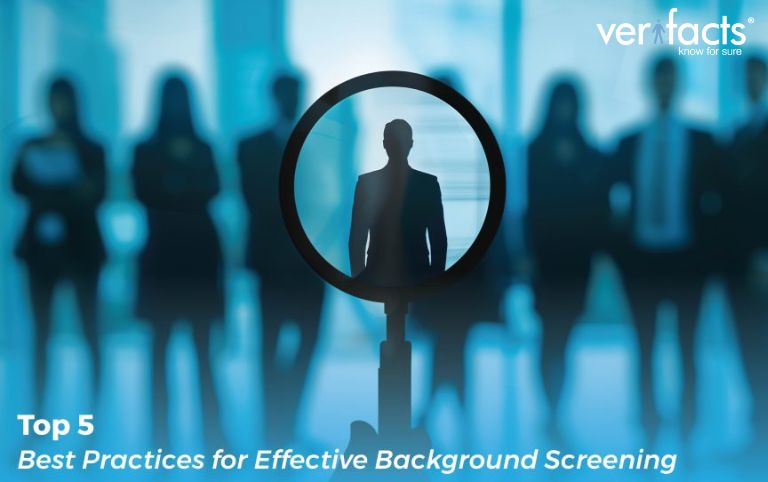
In the competitive landscape of talent acquisition, minimizing the risk of bad hires is not just important—it’s a business imperative. A single wrong hiring decision can lead to productivity loss, compliance issues, financial risks, and even long-term damage to organizational reputation.
By implementing robust background screening practices, organizations can ensure they hire individuals who are trustworthy, competent, and aligned with company values. Below are five essential best practices that every business should follow to build a reliable and future-ready workforce.
1️⃣ Assess Risk Parameters 🔐
-
Every organization faces unique risk factors, depending on its size, industry, and the nature of specific roles.
-
Common risks include data breaches, financial fraud, workplace misconduct, and regulatory non-compliance.
-
Different job positions also carry different levels of risk:
-
📊 Finance roles → Risk of embezzlement or fraud
-
💻 IT/Tech roles → Risk of data theft or cyberattacks
-
🏥 Healthcare roles → Risk of patient safety and compliance violations
-
-
Conducting a role-based risk assessment ensures that your screening process is tailored to identify the most relevant threats.
👉 Thorough risk evaluation at the beginning lays the foundation for a smart and customized verification process.
2️⃣ Choose the Right Service Provider 🤝
-
Organizations must decide whether to manage BGV internally or outsource it to a trusted verification partner.
-
Outsourcing is often the preferred choice, especially when:
-
The organization lacks dedicated internal resources
-
High volumes of candidates need to be screened quickly
-
Specialized checks (like international verification) are required
-
-
✅ Key factors in selecting a provider:
-
Strong industry reputation and proven track record
-
Transparent processes with data privacy compliance
-
Ability to deliver timely, accurate, and scalable services
-
-
Partnering with a reliable BGV service provider ensures confidentiality, consistency, and credibility in the screening process.
3️⃣ Ensure Information Sufficiency 📂
-
An incomplete or superficial background check can be just as dangerous as skipping the process altogether.
-
A comprehensive verification must include multiple layers of checks, such as:
-
🎓 Education verification – to confirm academic credentials
-
🏢 Employment history – to validate previous work experience
-
🪪 Identity verification – to ensure authenticity of documents
-
🧾 Criminal and civil records check – to ensure workplace safety
-
📉 Credit history (where applicable) – to evaluate financial responsibility
-
-
Gathering reliable and sufficient data provides a holistic view of the candidate and minimizes hiring mistakes.
👉 The more complete the picture, the more informed and confident the hiring decision will be.
4️⃣ Adhere to Legal Compliance ⚖️
-
Background screening must always be conducted within the framework of the law.
-
🔑 Key compliance practices include:
-
Obtaining written consent from candidates before verification
-
Using only legal and approved sources for information gathering
-
Ensuring data protection and confidentiality under laws like GDPR (globally) or DPDP Act (India)
-
-
Non-compliance can lead to penalties, lawsuits, and reputational harm.
-
A compliant process not only safeguards the organization but also builds trust and transparency with candidates.
👉 Legal compliance ensures that the background screening process is ethical, fair, and risk-free for all stakeholders.
5️⃣ Execute Fairly & Transparently 🤲
-
Fairness is the cornerstone of effective background verification.
-
Screening should be:
-
🔄 Consistent – applied equally across all candidates
-
🧾 Transparent – candidates should know what’s being verified and why
-
🛡️ Unbiased – free from discrimination based on gender, caste, religion, or personal bias
-
-
By ensuring fairness:
-
Candidates feel respected and valued
-
Organizations strengthen their reputation as ethical employers
-
Final hiring decisions are objective and merit-based
-
👉 A fair process not only identifies the right candidate but also reinforces the company’s values and credibility.
In today’s fast-paced hiring environment, background verification is not just a safeguard—it’s a strategic enabler of success. By following these five best practices—
1️⃣ Assessing risks 🔐
2️⃣ Choosing the right provider 🤝
3️⃣ Ensuring sufficient information 📂
4️⃣ Adhering to compliance ⚖️
5️⃣ Executing fairly 🤲
—organizations can reduce the risk of bad hires, strengthen workforce integrity, and protect their brand reputation.
🌟 Strong background screening is the bridge between hiring talent and building trust. In the long run, it ensures that every employee contributes positively to the company’s culture, stability, and growth.

